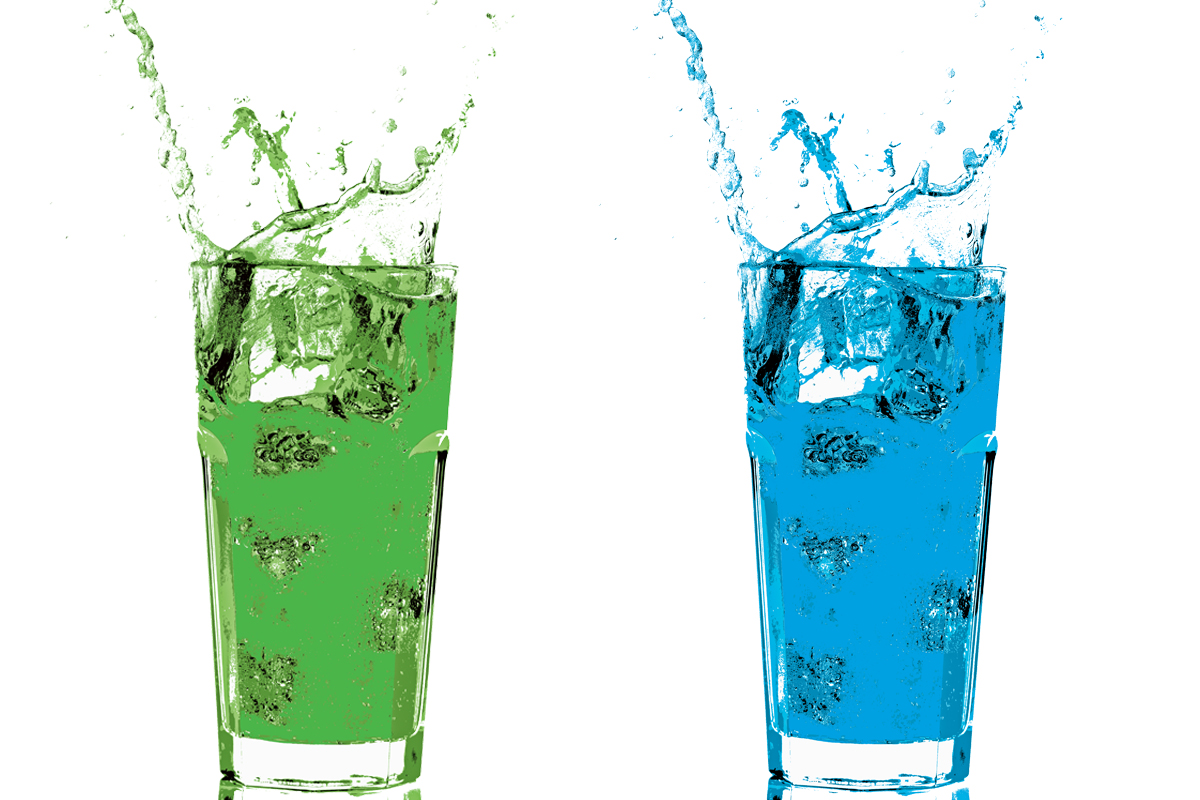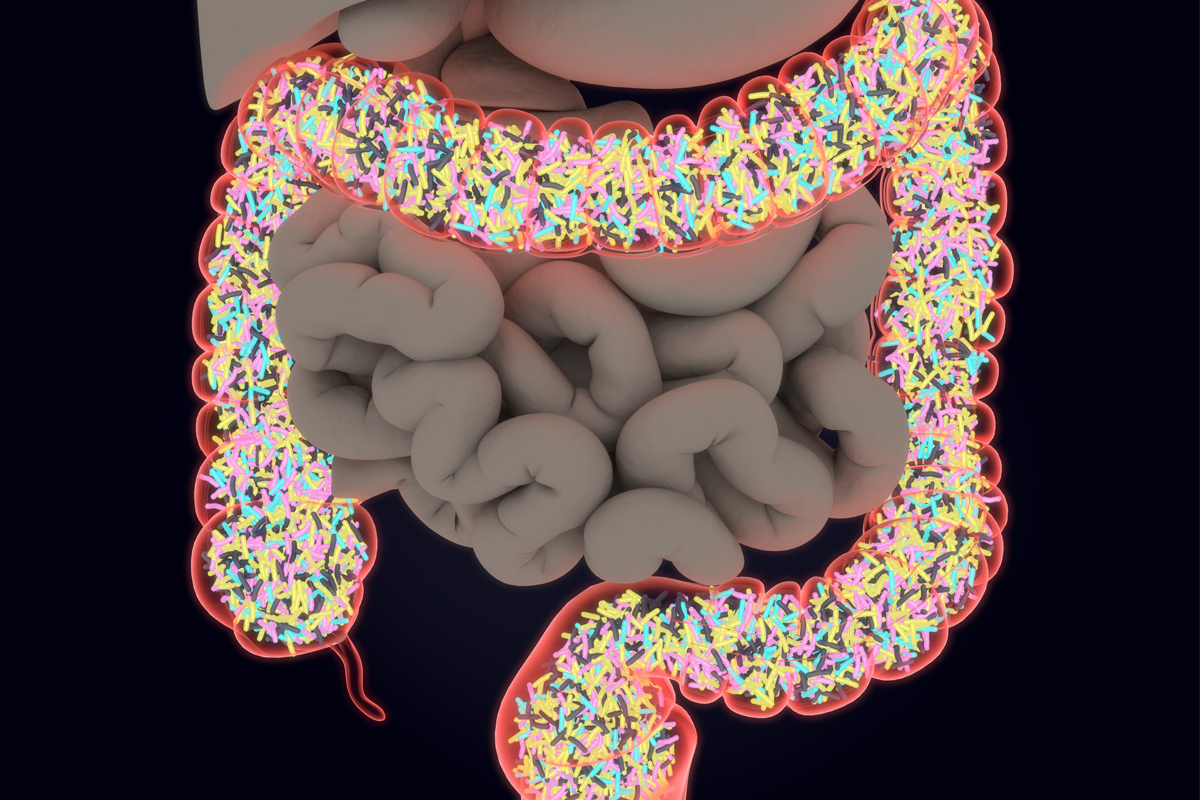Delicious Danger? A Research Update on Artificial Sweeteners
Artificial sweeteners' benefits can be overwhelmed by the potential negatives. When in doubt, a little goes a long way.
| Earn 1 CEC - Take Quiz

In human evolution, the preference for sweet taste was beneficial, since it helped to direct newborns toward eating nutritious food. Recent advances in medicine and nutritional sciences suggest that reducing intake of products high in sugar and salt could improve public health. Nevertheless, many people adore sweets and, therefore, artificial sweeteners (AS)—food supplements with chemical structures different from sugar—made their way onto the market.
These supplements are often thought to be healthier than sugar-based sweeteners, because AS supply sweetness with minimal or no extra calories. Fewer calories could help people lose weight, thereby preventing obesity and diminishing the incidence of diabetes. Replacing sugar with AS may seem to be a perfect solution for those who have a sweet tooth and care about their weight. However, recent studies suggest that consumption of AS may not be as safe as was expected, as these sweeteners pose potential risk for metabolic and other chronic disorders.
Sweet Diversity

Artificial sweeteners have evolved from saccharin—a supplement synthesized at Johns Hopkins University in 1879‐to many varieties found in more than 6,000 products currently available in the U.S. food market (Yang 2010). High expectations for the new sweeteners’ benefits led to this explosion in production and variety.
All AS are many times sweeter than common sugar, so they are called “high-intensity sweeteners.” Next generations of AS are represented by aspartame and sucralose, followed by sugar alcohols sorbitol and xylitol. Natural, plant-obtained substances, such as stevia, are also available.
In 2008, the Academy of Nutrition and Dietetics concluded that consumption of AS (in lieu of sugar) provided several health benefits, such as controlling diabetes and weight gain (Whitehouse, Boullata & McCauley 2008). Four years later, the U.S. Food and Drug Administration approved five synthetic sweeteners (acesulfame-K, aspartame, neotame, saccharin and sucralose) and one natural dietary supplement (stevia) as safe for consumption (Fitch & Keim 2012).
However, while intake of AS in amounts permitted by the FDA was expected to be completely safe, a number of warning studies have popped up within the last decade, suggesting the FDA and the food industry may have been too optimistic. Data obtained from human and animal research indicate several potential, although speculative, mechanisms of AS-mediated cardiological and metabolic disorders. These mechanisms may include genetic modification of fat tissue, changes to regulatory activity in the hippocampus and modulation of intestinal microflora.
How Sweet Are They?
With the exception of sugar alcohols, artificial sweeteners are high-intensity because they are sweeter than table sugar (sucrose).
NUTRITIVE SWEETENER
Has more than 2% of the calories contained in an equivalent amount of sugar.
- aspartame (Equal®, and Sugar Twin®), about 200 times sweeter than table sugar
NONNUTRITIVE SWEETENERS
Have less than 2% of the calories contained in an equivalent amount of sugar.
- acesulfame-K (Sunett® and Sweet One®), 200 times sweeter than table sugar
- saccharin (Sweet’N Low® and Necta Sweet®), 200–700 times sweeter
- sucralose (Splenda®), about 600 times sweeter
- stevia (plant-based), 200–400 times sweeter
- neotame (Newtame®), about 7,000–13,000 times sweeter
SUGAR ALCOHOLS
25%–100% as sweet as sugar
- sorbitol
- xylitol
Sources: FDA 2014; FDA 2018.
Obesity: An Unexpected Aftermath
Ironically, despite the common belief that using AS as a substitute for glucose (sugar) helps to control body weight, a cohort study of over 1,400 participants linked increases in body mass index and waist circumference to AS consumption (Chia et al. 2016). Many participants in AS studies tended to overcompensate by eating more food. In fact, if people were aware that their diets contained AS, their caloric intake was higher than that of control group members.
The connection between obesity and AS intake is believed to be related to the separation of caloric intake from sweet taste, which may stimulate appetite, causing higher food consumption. Higher caloric intake deregulates energy homeostasis (Malik, Schulze & Hu 2006).
Potential mechanisms causing weight gain in AS consumers include a stronger preference for sweet taste, imbalances in intestinal microflora and stimulation of fat-tissue growth. Also, intake of AS-containing diet beverages together with sugar-containing foods modifies insulin production and gastric emptying. This process causes sugar to be absorbed faster, stimulating appetite and weight gain (Romo-Romo et al. 2017). Besides, sweetened beverages are less satiating than solid food, and consumption of artificially sweetened beverages has grown exponentially (Mattes & Popkin 2009).
Furthermore, AS activate the incretins, glucagon-like peptide 1 (GLP-1) and gastric inhibitory peptide (GIP)—several hormones that increase insulin production, in turn stimulating feelings of hunger (Egan & Margolskee 2008).
If this is true for grownups, what about children?
Kids, Sweets and Health

Consumption of noncaloric beverages by children and teenagers has dramatically increased during the last two decades. Needless to say, both parents and pediatricians should be concerned about safety. Data from pediatric studies mirror findings in adults.
As a powerful example, consuming AS beverages was linked to obesity among teenagers and youngsters by the National Health and Nutrition Examination Survey (Sylvetsky et al. 2017). Similar results were obtained by a comprehensive study involving more than 6,100 teenagers from 12 countries (Katzmarzyk et al. 2016). Another study reported that girls consuming diet soda had a higher caloric intake than the control group (Striegel-Moore et al. 2006).
Overall, studies in children suggest that consumption of AS-containing beverages may decrease caloric intake when taken between meals, while consuming AS with meals causes behavioral changes that lead to an increase in meal-related calories.
True, noncaloric sweeteners may be a better choice than sugar-sweetened options; however, it does not mean that AS are completely safe. In particular, AS consumption during childhood can strongly influence dietary preferences in grownups and even boost intake of sugar-rich foods during adulthood (Swithers 2015). Elevated intake of AS has been linked to poor nutritional quality in children, probably by inclining taste toward AS-containing products instead of healthier diets (Drewnowski et al. 2012).
Notably, AS may influence children’s health even before birth. One study found that maternal intake of AS during pregnancy correlated with a risk of higher BMI in offspring (Azad, de Souza & Sharma 2016). Moreover, another study of pregnant women consuming AS during pregnancy reported that women who consumed more AS-containing beverages were more likely to report a diagnosis of asthma or allergic rhinitis in their children (Maslova et al. 2013).
Artificial Sweeteners for Diabetes and Metabolic Disease
Most artificial sweeteners have few or no calories. Recent long-term, prospective studies raise the concern that AS consumption could contribute to the development of various metabolic disorders. In addition to the effects on microflora and a link to obesity, recent studies have shown that both frequent intake and prolonged consumption of AS are associated with type 2 diabetes risk (Fagherazzi et al. 2017). One study found an elevated risk of type 2 diabetes with daily intake of 330 milliliters of artificially sweetened beverages (Greenwood et al. 2014). AS intake has also been linked to overweight and elevated fasting blood sugar (Suez et al. 2014).
These findings indicate that artificially sweetened beverages may not be appropriate substitutes for sugar-containing products in the prevention of type 2 diabetes. In addition to the sweeteners’ effects on the digestive system, a broad range of research has found elevated synthesis of free radicals by AS in the kidneys. What’s more, a positive correlation between nonnutritional sweet beverages and chronic kidney disease has been reported (Saldana et al. 2007).
The Dark Side of Aspartame
Aspartame, one of the most popular AS, is regularly consumed by millions of people and is present in thousands of sugar-free products, including sodas, dairy products and medicines. These foods are often expected to help with weight loss or to prevent diabetes from progressing.
How sweet is aspartame? It is 200 times sweeter than sugar. Compared with other AS, aspartame has been extensively studied. Is it the most popular option because it is the safest? Not necessarily.
In addition to having the adverse effects common to many sweeteners, aspartame may directly influence cognitive functions. In fact, the scientific literature includes strong criticism of aspartame, not only for its potential adverse metabolic effects, but also for its influence on the nervous system.
According to the FDA, the acceptable daily dose of aspartame is 50 milligrams per kilogram of body weight per day. Several reports show that aspartame intake may induce neurological and cognitive disorders. High doses of aspartame have been found to impair cognitive abilities, as assessed by spatial orientation and memory scores (Lindseth et al. 2014). As to mood and behavioral changes, study participants with high aspartame intake were more depressed than those on a low-aspartame diet, and they demonstrated more irritability.
Certainly, the potential adverse effects of AS depend on consumption length and dose. Nonetheless, though many of the studies have been done on experimental animals, scientists can already suggest that aspartame may cause a variety of negative effects—such as brain and kidney damage—in humans, specifically older consumers and patients with diabetes or dysbacteriosis.
Artificial Sweeteners Inhibiting Gut Microbiota

Bacteria colonize the human gut in large numbers. These microscopic creatures maintain our healthy metabolism by regulating the functions of the immune system, supporting proper functioning of the intestinal tract and potentiating digestion mechanisms. Thus, bacteria living in the human gut are vitally valuable for our health.
However, the subtle layer of these friendly bugs can be easily damaged. An imbalance in the intestinal microflora often leads to indigestion or other gastrointestinal disorders. Both medical doctors and nutritionists are concerned about potential modulation of gut microflora by frequent intake of noncaloric AS.
Many experiments have been performed with animals to prove these effects on the intestinal bacteria (Suez et al. 2015). In line with the animal data, intake of noncaloric AS caused specific changes in gut microflora, especially Enterobacteria, in randomly chosen study participants. Even FDA-approved doses of saccharin were found to elevate glucose intolerance via the effects on intestinal bacteria (Suez et al. 2014). Likewise, intake of aspartame has been shown to increase fasting glucose and cause an imbalance in gut microflora (Palmnas et al. 2014).
See also: Artificial Sweeteners Can Change Your Gut’s Microbiota
Sports and No-Cal Beverages With Artificial Sweeteners
Except for sumo experts, most athletes need to control their body fat, although many of them like sweet foods just like anyone else. Consuming noncaloric beverages may seem like a perfect way to save calories and satisfy their longing for sweets. Sounds perfect, doesn’t it?
But scientists believe that AS may hamper the body’s capacity to control calorie intake based on taste—and could therefore stimulate overeating. Recent data suggest that these sweeteners have several possible targets in the human organism, including fat tissue, the intestinal microflora and metabolic centers in the central nervous system (Chan, Hashemi & Subhan 2017). Although bodybuilders and many other athletes may initially lose weight by using AS, they are likely to compensate by consuming more calories later. Therefore, sports professionals who need to decrease body fat should consume sweeteners with caution.
Find the Balance
The FDA has stated that artificial sweeteners are safe, an opinion that is supported by research not cited here. However, as more research emerges, new information is sounding a note of caution about the dangers of artificial sweeteners. Both observational human studies and experimental animal research have found heightened weight gain, diabetes, metabolic syndrome and other anguishing cardiometabolic effects induced by regular consumption of AS. Besides, modification of microbiota is one of the most potentially dangerous effects of regular AS intake, since even delicate alterations to these microorganisms may elevate cardiometabolic risk. Beverages containing an AS such as aspartame may impair cognitive functions and increase mood disorders.
Presently, data about the effects of AS on various physiological systems are still very limited. It remains to be uncovered whether these effects are mainly pathogenic, beneficial or neutral. Future studies should figure out the long-term effects of AS intake on metabolism, the heart and the microbiome.
In the meantime, less is more. The negative effects of AS appear to result when high quantities are consumed, over long periods of time.
References
Azad, M.B., de Souza, R.J., & Sharma, A.K. 2016. Artificially sweetened beverage consumption during pregnancy and infant body mass index—Reply. JAMA Pediatrics, 170 (11), 1117–19.
Chan, C.B., Hashemi, Z., & Subhan, F.B. 2017. The impact of low and no-caloric sweeteners on glucose absorption, incretin secretion, and glucose tolerance. Applied Physiology, Nutrition, and Metabolism, 42, 793–801.
Chia, C.W., et al. 2016. Chronic low-calorie sweetener use and risk of abdominal obesity among older adults: A cohort study. PLOS One, 11 (11), e0167241.
Drewnowski, A., et al. 2012. Sweetness and food preference. The Journal of Nutrition, 142, 1142S–48S.
Egan, J.M., & Margolskee, R.F. 2008. Taste cells of the gut and gastrointestinal chemosensation. Molecular Interventions, 8 (2), 78–81.
Fagherazzi, G., et al. 2017. Chronic consumption of artificial sweetener in packets or tablets and type 2 diabetes risk: Evidence from the E3N-European Prospective Investigation into Cancer and Nutrition study. Annals of Nutrition & Metabolism, 70 (1), 51–58.
FDA (U.S. Food & Drug Administration). 2014. High-intensity sweeteners. Accessed July 9, 2019: fda.gov/food/food-additives-petitions/high-intensity-sweeteners.
FDA. 2018. Additional information about high-intensity sweeteners permitted for use in food in the United States. Accessed July 9, 2019: fda.gov/food/food-additives-petitions/additional-information-about-high-intensity-sweeteners-permitted-use-food-united-states#non-nutritive.
Fitch, C., & Keim, K.S. 2012. Position of the Academy of Nutrition and Dietetics: Use of nutritive and nonnutritive sweeteners. Journal of the Academy of Nutrition and Dietetics, 112 (5), 739–58.
Greenwood D.C., et al. 2014. Association between sugar-sweetened and artificially sweetened soft drinks and type 2 diabetes: Systematic review and dose-response meta-analysis of prospective studies. British Journal of Nutrition, 112 (5), 725–34.
Katzmarzyk, P.T., et al. 2016. Relationship between soft drink consumption and obesity in 9-11 years old children in a multi-national study. Nutrients, 8 (12), pii E770.
Liebman, M., et al. 2003. Dietary intake, eating behavior, and physical activity-related determinants of high body mass index in rural communities in Wyoming, Montana, and Idaho. International Journal of Obesity and Related Metabolic Disorders, 27 (6), 684–92.
Lindseth, G.N., et al. 2014. Neurobehavioral effects of aspartame consumption. Research in Nursing & Health, 37 (3), 185–193.
Malik, V.S., Schulze, M.B., & Hu, F.B. 2006. Intake of sugar-sweetened beverages and weight gain: A systematic review. The American Journal of Clinical Nutrition, 84 (2), 274–88.
Maslova, E., et al. 2013. Consumption of artificially-sweetened soft drinks in pregnancy and risk of child asthma and allergic rhinitis. PLOS ONE, 8 (2), e57261.
Mattes, R.D., & Popkin, B.M. 2009. Nonnutritive sweetener consumption in humans: Effects on appetite and food intake and their putative mechanisms. The American Journal of Clinical Nutrition, 89 (1), 1–14.
Mooradian, A.D., Smith, M., & Tokuda, M. 2017. The role of artificial and natural sweeteners in reducing the consumption of table sugar: A narrative review. Clinical Nutrition ESPEN, 18, 1–8.
Palmnas, M.S., et al. 2014. Low-dose aspartame consumption differentially affects gut microbiota-host metabolic interactions in the diet-induced obese rat. PLOS ONE, 9 (10) e109841.
Rogers, P.J., et al. 2016. Does low-energy sweetener consumption affect energy intake and body weight? A systematic review, including meta-analyses, of the evidence from human and animal studies. International Journal of Obesity, 40 (3), 381–94.
Romo-Romo, A., et al. 2017. Non-nutritive sweeteners: Evidence on their association with metabolic diseases and potential effects on glucose metabolism and appetite. Revista de Investigacion Clinica, 69, 129–38.
Saldana, T.M., et al. 2007. Carbonated beverages and chronic kidney disease. Epidemiology, 18 (4), 501–6.
Striegel-Moore, R.H., et al. 2006. Correlates of beverage intake in adolescent girls: The National Heart, Lung, and Blood Institute Growth and Health Study. The Journal of Pediatrics, 148 (2), 183–7.
Suez, J., et al. 2014. Artificial sweeteners induce glucose intolerance by altering the gut microbiota. Nature, 514, 181–86.
Suez, J., et al. 2015. Non-caloric artificial sweeteners and the microbiome: Findings and challenges. Gut Microbes, 6 (2), 149–55.
Swithers, S.E. 2013. Artificial sweeteners produce the counterintuitive effect of inducing metabolic derangements. Trends in Endocrinology and Metabolism, 24 (9), 431–41.
Swithers, S.E. 2015 Artificial sweeteners are not the answer to childhood obesity. Appetite, 93, 85–90.
Sylvetsky, A.C., et al. 2017. Low-calorie sweeteners: Disturbing the energy balance equation in adolescents? Obesity, 25 (12), 2049–54.
Whitehouse, C.R., Boullata, J., & McCauley, L.A. 2008. The potential toxicity of artificial sweeteners. AAOHN Journal, 56 (6), 251–59.
Yang, Q. 2010. Gain weight by “going diet”? Artificial sweeteners and the neurobiology of sugar cravings. The Yale Journal of Biology and Medicine, 83, 101–8





